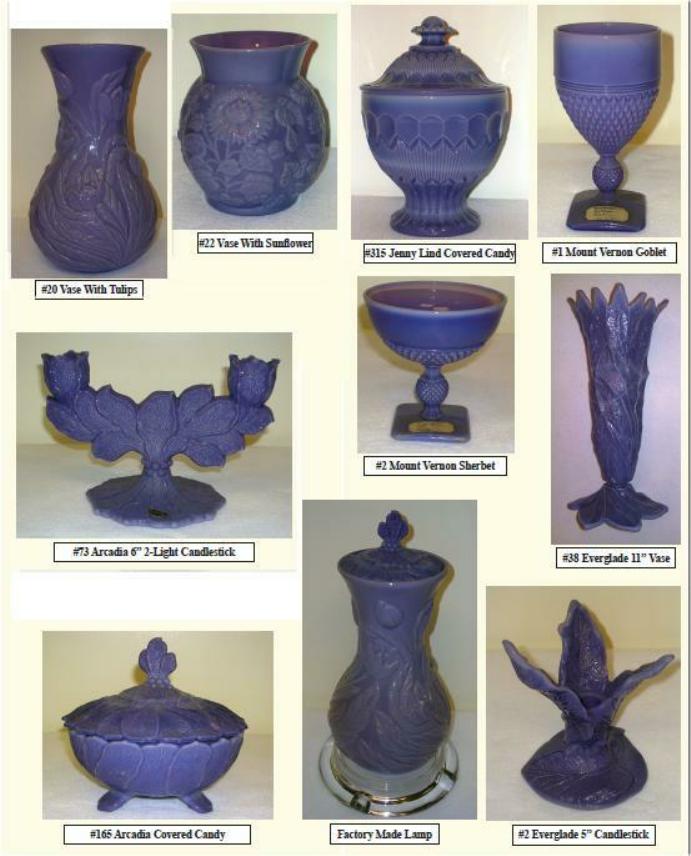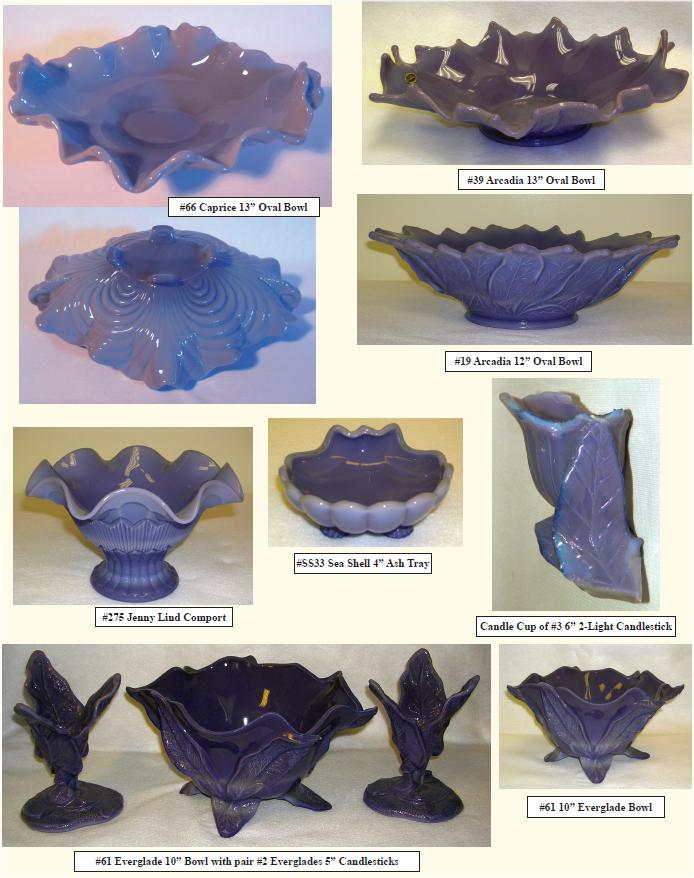Violet, a Mystery Color
by David Ray
Issue No. 460 - August 2012
While preparing to lead a program titled, "Shades of Purple", I discovered very little is known about Violet. The only research article dedicated to Violet for the Crystal 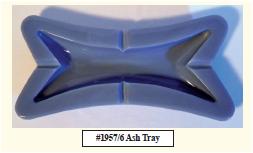 Ball was written more than 35 years ago by Lynn Welker in May 1977. After discussions with several knowledgeable Cambridge glass collectors, I discovered that little is known about the production of Violet. It is common knowledge that Violet was only produced during the re-opened period (1955-1958) and production was limited to a small number of items. Factory inventory records from the re-opened period did not mention Violet. One piece of information helps narrow the production dates - in December 1956, the glass formula for Violet was officially recorded. The coloring agents includes Powder Blue (blue), Didymium Oxide (lilac red), and Arsenic, which helps counteract impurities in the sand to avoid green coloration. The
Ball was written more than 35 years ago by Lynn Welker in May 1977. After discussions with several knowledgeable Cambridge glass collectors, I discovered that little is known about the production of Violet. It is common knowledge that Violet was only produced during the re-opened period (1955-1958) and production was limited to a small number of items. Factory inventory records from the re-opened period did not mention Violet. One piece of information helps narrow the production dates - in December 1956, the glass formula for Violet was officially recorded. The coloring agents includes Powder Blue (blue), Didymium Oxide (lilac red), and Arsenic, which helps counteract impurities in the sand to avoid green coloration. The 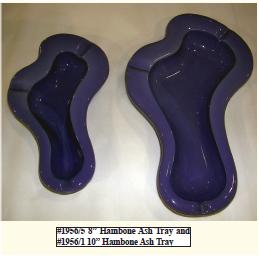 combination of Power Blue and Didymium Oxide give Violet its purple coloring. Based upon the date of the color formula, the majority of the pieces produced in Violet were made during 1957 and, perhaps, 1958.
combination of Power Blue and Didymium Oxide give Violet its purple coloring. Based upon the date of the color formula, the majority of the pieces produced in Violet were made during 1957 and, perhaps, 1958.
The 19 known items produced in Violet are pictured in this article. Although the majority of the items come from the Everglade/Arcadia lines, the remaining items appear to have been randomly selected. Of the 19 items that have been found, only three items were introduced exclusively during the re-opened period. These items are the 1956/1 10" ash tray, 1956/5 8" ash tray, and 1957/6 ash tray. Due to their shapes, collectors refer to these items as the "hambone ash trays" and the "bow-tie ash tray."
Because of the rarity of Violet pieces, production was apparently either limited to a very short time period or the new color was not well-received by the public. During my 20 plus years of collecting Cambridge glass, I have had the opportunity to personally see each of these items 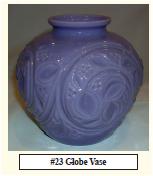 in collections. Most Violet items are extremely rare and only appear in the most advanced collections, but the #20 Everglade tulip vase, #22 Everglade sunflower vase, and #23 Everglade globe vase appear most frequently.
in collections. Most Violet items are extremely rare and only appear in the most advanced collections, but the #20 Everglade tulip vase, #22 Everglade sunflower vase, and #23 Everglade globe vase appear most frequently.
Assessing which Violet items are the rarest is difficult but, to my knowledge and experience, the production of the #61 10" Everglade bowl, #73 2-light Arcadia candlestick, #74 1-light Everglade candlestick, #38 Everglade vase, #19 Arcadia bowl, #39 Arcadia bowl, #SS33 Sea Shell 4" ash tray, Mount Vernon 9 oz. goblet and 6.5 oz. sherbet, and #66 Caprice bowl were likely limited to a single run. From conversations with fellow Cambridge glass collectors, the number of known examples of these pieces ranges from 1 to 4. This definitely meets the definition of rare!
An expedition to the Cambridge Glass Company dump uncovered a candle cup of the #3 Everglade 2-light candlestick in Violet. A complete #3 Everglade 2-light candlestick has not been reported, but the Violet candle cup verifies production was attempted. For Everglade and Violet collectors, this gives you something to dream about! Hopefully, because Violet was produced in the late 1950's, more Violet pieces will surface, especially via estate sales. If anyone is aware of Violet items not included in this article, please let me know, so we can provide an update to this article.

